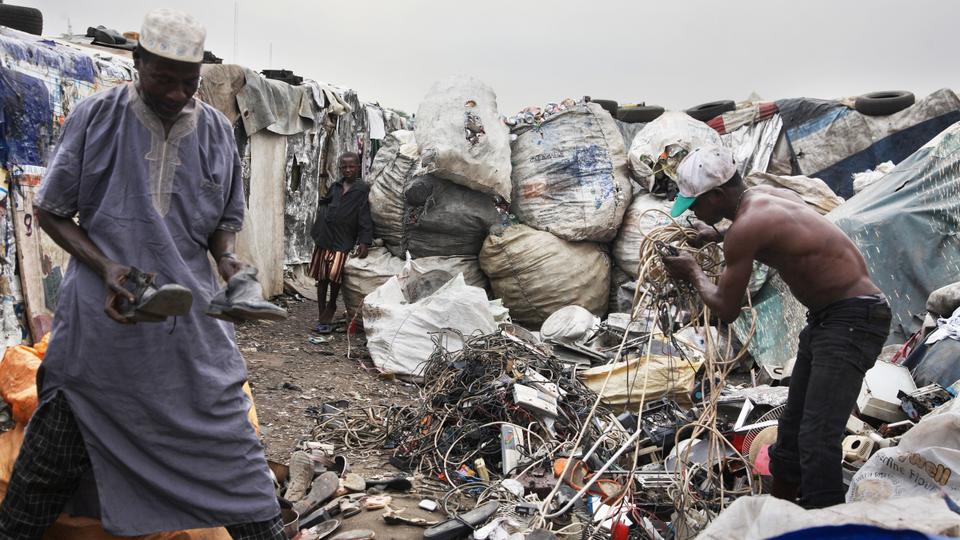It’s a towering mountain of waste that greets the eyes as cars zip by on nearby highways and head into the central area of Lagos.
Formerly Nigeria’s capital city, this commercial nerve centre is one of Africa’s fastest growing economies and is its most populated urban centre, with an estimated 21 million residents. But for all of Lagos’ appeal, the megacity is drowning in rubbish. It is mostly plastic waste, which threatens the environment in no small measure. Yet, growing piles of another kind of waste could prove to be far more dangerous.
Overwhelming amounts of electronic waste are piling up in landfills across the port city. Also referred to as Waste from Electrical and Electronic Equipment (WEEE) or simply e-waste, it involves discarded items that have power or battery supplies. Old electrical and electronic equipment (EEE) such as computers, phones, printers, televisions and refrigerators, commonly end up as e-waste.
As demand for new technology grows nationwide, and Lagos’s tech scene expands, so does the problem of mounting levels of e-waste, and the dilemma of recycling it. Although it states otherwise on its website, the Lagos Waste Management Agency (LAWMA) does not, in practice, specially treat e-waste by collecting and sorting it before it arrives at dumpsites.
E-waste is one of the fastest growing types of waste in the world. But globally, the eco-friendly recycling of e-waste is optimally low: more than half of almost 50 million metric tonnes of e-waste generated worldwide ends up in landfills or is illegally transported, according to the United Nations Environmental Programme.
As trendier technologies emerge, the lifespans of consumer electronics are getting even shorter, worsening the issue. The world is currently generating e-waste faster than it can be recycled or repurposed. Developed nations are responsible for more than half of that. In 2014, the United States alone generated 11 million metric tonnes of e-waste, 80 percent of which was exported to poorer countries where they are either sold for re-use, mined for raw materials or abandoned in landfills.
African countries like Nigeria bear the brunt: An estimated 500 containers, each carrying about 500,000 used computers and other electronic equipment, enter the country’s ports every month from the United States, Europe and Asia.
A ready market for used EEE encourages the importation, 80 million Nigerians live on less than $2 a day, yet more than 90 million use internet enabled-gadgets.


Comment here